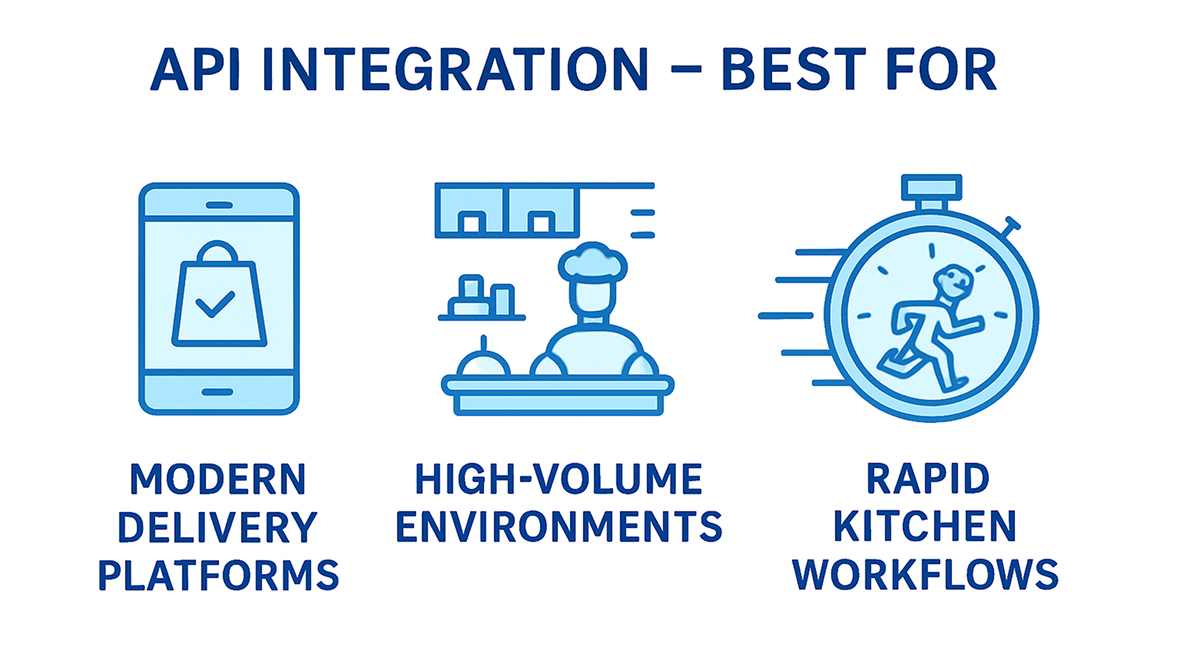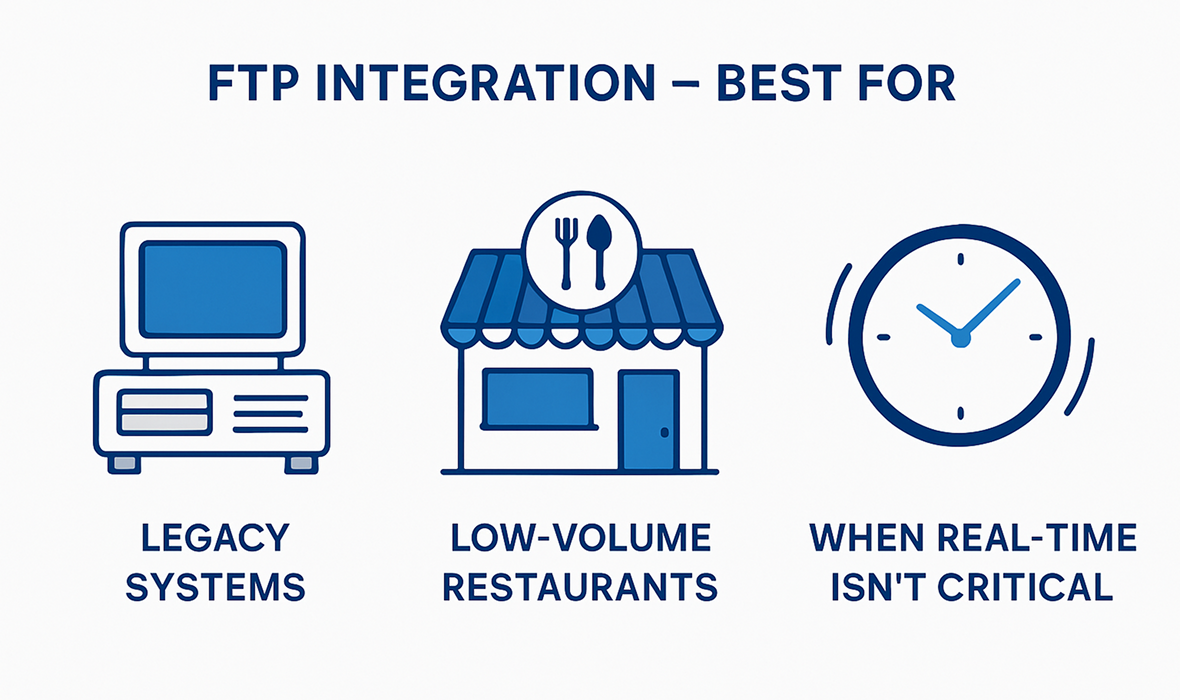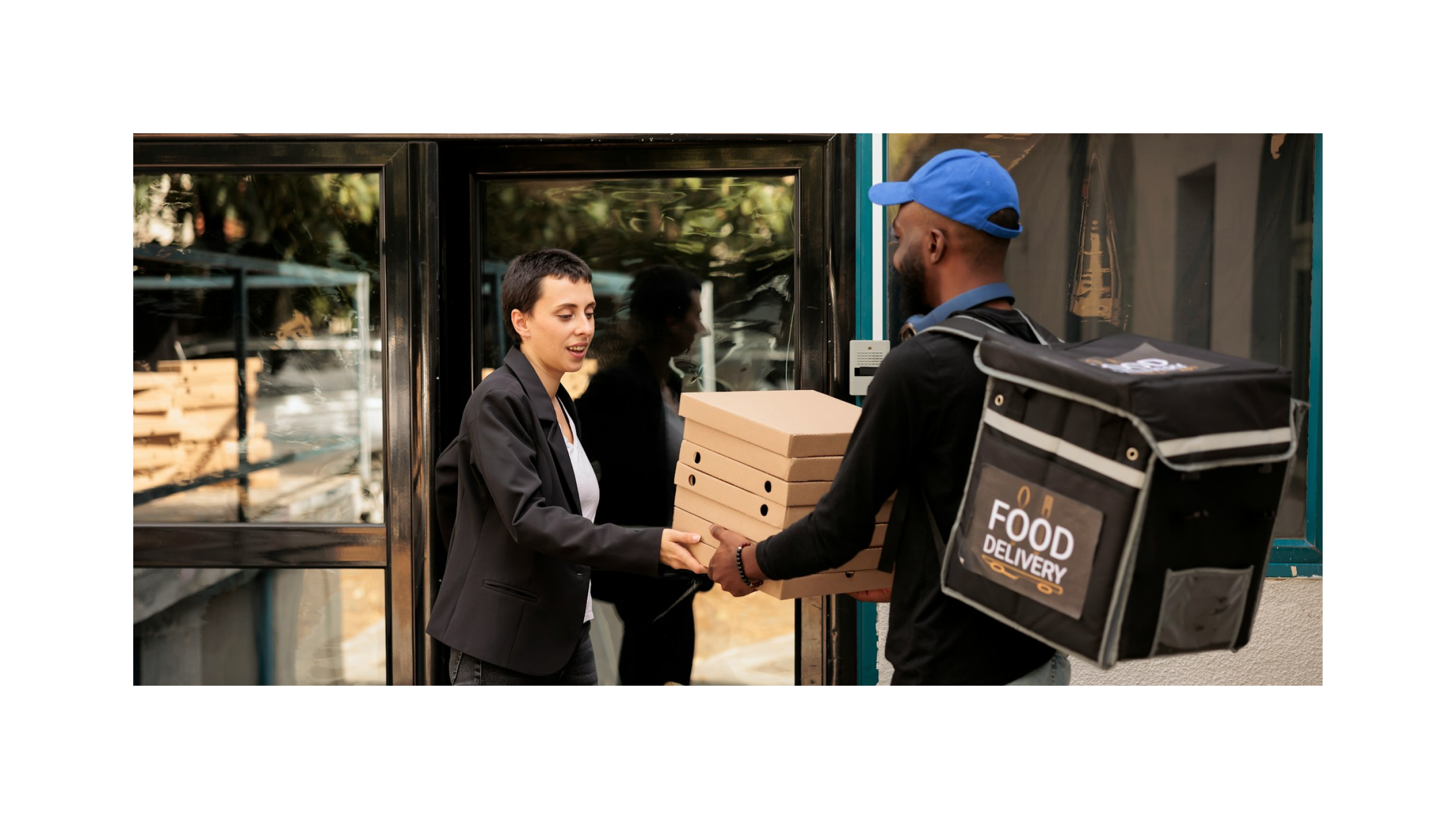POS Delivery Integration. API vs FTP – What Works Best?
For many restaurant chains, third-party delivery platforms like Wolt, Just Eat, or 10bis are now essential revenue streams. But these partnerships also bring a technical challenge: how should your POS system receive incoming orders?
From a development standpoint, delivery providers usually stick to one approach — either API integration or FTP integration. Each method comes with its own advantages, trade-offs, and ideal use cases. Knowing how both work helps restaurant owners and POS providers adapt to whichever method their delivery partners use and make the most of it in daily operations.
Why Integrate Delivery Platforms with a POS?
When your POS is directly connected to delivery platforms, you get more than just convenience:
- ✅ Operational efficiency – No more manually entering orders from tablets into the POS.
- ✅ Reduced errors – Eliminate miscommunication between the front-of-house and kitchen.
- ✅ Faster order processing – Orders go straight to the kitchen or bar printer in seconds.
- ✅ Better reporting & data – Real-time synchronization with sales, billing, and analytics.
In short, seamless integration saves time, reduces headaches, and makes customers happier.
The Two Main Integration Approaches
1. API Integration
Orders are sent (pushed) or retrieved (pulled) from the delivery platform via RESTful APIs, typically in real time. Most modern delivery services now provide this option.
2. FTP Integration
Orders are exported and imported as structured files (CSV, XML, JSON) via FTP/SFTP. This is common with legacy platforms or when no real-time API is available.
Deep Dive: API Integration
Pros
- Real-time – Orders arrive instantly in the POS.
- Better reliability – Easier to validate, retry, and monitor transactions.
- Scalable & secure – Modern authentication like OAuth or JWT.
- Future-proof – Easier to extend for new features like menu sync or promotions.
Cons
-
Higher initial investment – Requires close cooperation with the delivery platform’s tech team.
-
Ongoing maintenance – Third-party APIs can change, requiring regular updates.
-
Potential limits – Rate limits or complex authentication flows can slow things down.

Best For: Modern platforms, high-volume restaurants, and fast-paced kitchen environments.
Deep Dive: FTP Integration
Pros
- Simple setup – Especially for older POS systems.
- Works without an API – Useful if the delivery partner’s tech is limited.
- Good for batch processing – Can group multiple orders in one file transfer.
Cons
- Not instant – Delays between when a customer orders and the POS receives it.
- Manual monitoring – More effort to troubleshoot or validate orders.
- Data format headaches – Differences in file structure and error handling can slow integration.

Best For: Legacy systems, low-volume restaurants, and situations where real-time isn’t critical.
Choosing Between API and FTP
When deciding, consider:
- Platform maturity – Does the delivery partner offer a robust API?
- Order volume – The higher the volume, the more API’s speed matters.
- Time sensitivity – How critical is real-time processing?
- Error handling – Do you need automated retries and validation?
- Resources & timeline – Do you have the dev capacity for an API build?
- Security & compliance – PCI, GDPR, and other regulations.
Our Experience
Our team has integrated both API and FTP connections into a single POS interface. For the end user — waitstaff or kitchen staff — the technical method doesn’t matter. They just need a smooth, consistent experience.
We handle the complexity behind the scenes, so orders from Wolt via API and orders from an older FTP-based platform appear identical in the POS. This unified approach keeps workflows simple while allowing for gradual tech upgrades.

Conclusion
There’s no one-size-fits-all answer:
- API is ideal for speed, scalability, and modern integrations.
- FTP still works for legacy setups and initial partnerships.
The right choice depends on your partners, operations, and technical resources. Often, the best solution is a hybrid approach — using API where possible, but still supporting FTP where needed.
Want help integrating delivery into your POS? Let’s talk. As a POS software development company we've been taking care of POS software development since 2012.
